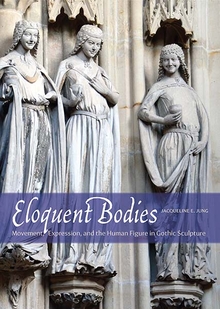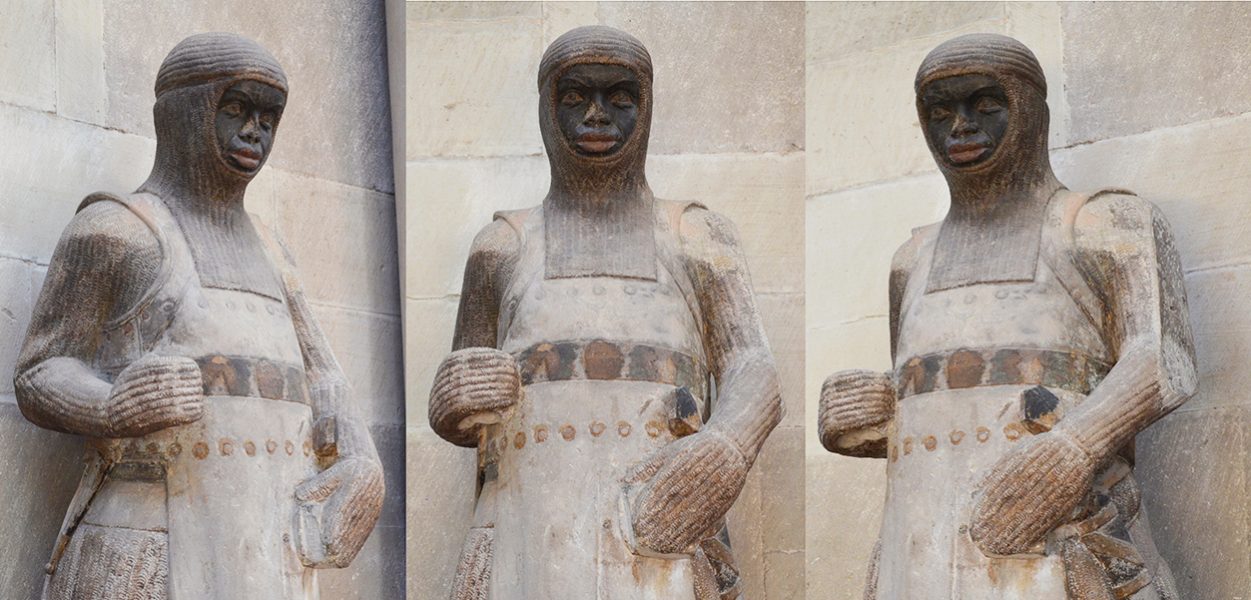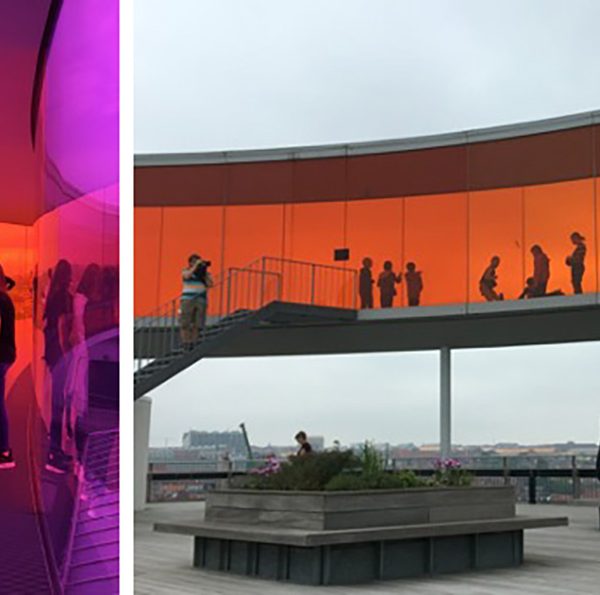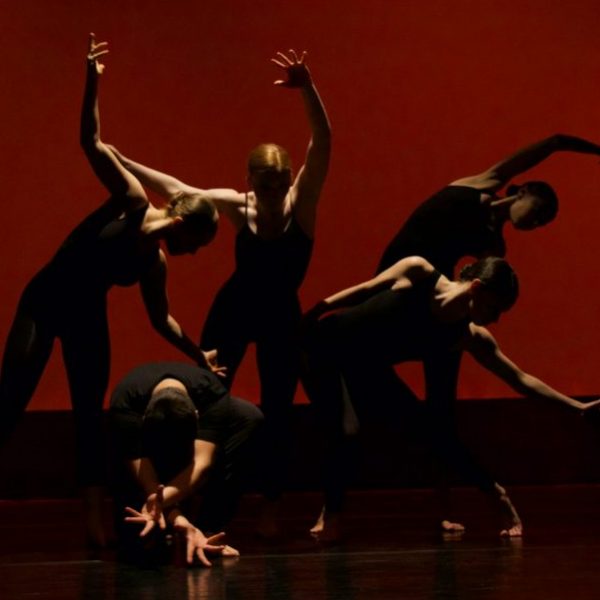Reflections on Africans in Gothic Sculpture, part 2
Images of Justice and Power
Jacqueline E. Jung —
In the choir of Magdeburg Cathedral, the black Saint Maurice, carved and painted around 1250, stands with his co-patron Catherine as complementary opposites; together they indicate the plenitude of this Christian ecclesia in both its Militant and Triumphant aspects. (Read more about this in part 1.) Maurice’s special status as protector of the church was entrenched well before the creation of this sculpture. In a vision recorded in a chronicle of the archbishops of Magdeburg around 1142, a monk witnessed Maurice and an assembly of saints subjecting a deceased archbishop to a formal trial in the cathedral choir. Finding him guilty of squandering ecclesiastical properties and goods, the saints stripped him of his episcopal vestments and cast him out of the sacred precinct.
We don’t know whether the sculptors active at Magdeburg a century later were familiar with this story, but the widespread idea of Maurice as an effective guardian of the church must have played a role in their novel representation. And it seems to have merged with encounters northern ecclesiastical patrons increasingly had with African people, whether during their own travels through Spain, Italy, and the Near East or through meetings with the Holy Roman Emperor, Frederick II (d. 1250). Though mainly residing in Sicily, Frederick traveled with a huge entourage of people and animals from various lands, and entrusted Africans above all with the guardianship of jewels and other treasures. To the many strands of meaning operative in the statue of Maurice in Magdeburg, we can add that of defensor ecclesiae.
Already in the 1210s and ‘20s, in the new sculpture programs of high-profile French cathedrals, African men appeared in biblical narratives as agents of worldly authority. On the lower register of a tympanum on the north transept of Chartres Cathedral, for example, we find a man with African facial features and hair and a deep brown coloration, wearing standard layman’s garb and handling a sword.

The scene is the Judgment of Solomon: the king settles a dispute between his concubines over which of two infants – one live, one stillborn – belongs to whom by commanding that the living baby be divided equally (1 Kings 3: 16-28). Ingeniously, the scene has been composed to be legible from both directions. Viewed from left to right, we see the attendant draw his sword as Solomon directs another man to present the baby to the women, sparking their agitated gestural responses; from right to left, we observe the revelation of the true mother, which prompts Solomon to demand the baby’s retraction and the Black attendant, in turn, to sheathe his sword. Either way, if medieval viewers knew that this process of discernment was the result of Solomon’s wisdom, they would also have recognized the African man as its instrument.

Despite his marginal placement in the tympanum, this figure is the pivot around which the whole drama turns, for it’s the movement of his sword-bearing arm, prepared to enact Solomon’s command to split the baby, that has triggered the women’s truth-revealing behaviors at the center. The attendant’s crucial role is underscored by his facial demeanor and gaze: with his mouth set gravely and his brow slightly furrowed, he angles his face and eyes toward beholders. Alone among the narrative actors, he becomes what Gili Shalom has (in another context) termed an “inviting figure,” breaking the fourth wall to engage viewers and provoking them to consider the justice and wisdom of their own actions.
Whereas at Chartres the Black attendant wields his power (and, by extension, Solomon’s) by not deploying his sword, on the St. Stephen tympanum on the south transept of Notre Dame in Paris, from the later 1250s, we find an African man playing a more active role.

The left and center scenes of the lintel show the youthful deacon Stephen preaching to small communities of listeners – first a cohort of stereotyped Jewish men with long beards and pointed caps, who respond with gestures of dismay and agitation, then a more receptive group that includes a woman nursing a child and a man writing down Stephen’s words. In response to Stephen’s proselytizing, Acts tells us, concerned members of “the synagogue of the Libertines, and of the Cyrenians, and of the Alexandrians, and of them that were of Cilicia and Asia” soon concocted charges of blasphemy against him. “They stirred up the people, and the ancients, and the scribes; and running together, they took him, and brought him to the council” of the Sanhedrin (Acts 6: 9-12). These, compressed together, are the actions we find on the lintel’s right side.

The high priest hears the complaints against Stephen from his seat in the far corner; he sits with elbows akimbo and legs crossed in a pose that signified lay male legal authority in Gothic art. Forming a bridge between the preaching scenes and the trial is a figure of extraordinary vigor and presence: a tall man in Roman military armor (the scalloped cuirass and skirt very different from St.Maurice’s modern chain-mail and leather ensemble) and a winged helmet, pausing his stride with left arm raised high to grasp Stephen’s hair. In his costume, contrapposto stance and wide-open contours he differs dramatically from all the other tympanum figures – so, too, in his facial features, the heavy brow, wide nose, and full lips combining with short, tightly curled hair to indicate his African origins. He is joined by two men with looser bobbed hairstyles, longer noses, and thin lips, more in line with what anthropologists call the “somatic norm image” of medieval Europeans: an elder man wearing a snug cap tied under the chin, and a younger fellow in a soft Phrygian cap, who grasps Stephen’s collar to present him to the judge. With great artistic economy, the sculptors have signaled, in this trio, the diversity of ethnic communities angered by Stephen’s preaching, the range of people involved in his apprehension, and the temporal unfolding of the events (running – taking – presenting to authorities).
If St. Maurice at Magdeburg signaled the universalizing ambitions of the Holy Roman Empire through his Blackness alone, the soldier in Paris brings together a wider range of temporal and geographic references. If his face signifies distant Africa, his winged headdress associates him with depictions of Muslims from the Near East, while his costume and stance locate him in Roman antiquity. His body thus does not just bring the foreign into an otherwise local setting; it brings together different kinds of foreignness into one unit, and uses them to show the range of people Stephen was up against.

It is not enough, though, to say that these signs of difference per se mark the figure as a “heathen and villain,” as earlier scholars have done; the references are more complex. The striding stance, open pose, and military clothing call to mind the commanding portraits of Roman leaders addressing the public, such as the Marcus Aurelius from around 160 CE now in Louvre-Lens.
We may have a specific source for the captor figure in a splendid sardonyx cameo known as the Gemma Tiberiana (made during the first half of the first century CE), which King Louis IX acquired in 1247 and housed in his new palace chapel, the Sainte Chapelle. While modern historians understand the cameo’s subject to be the general Germanicus either greeting or bidding farewell to his adopted parents, the emperor Tiberius and his wife Livia, Louis and his contemporaries read it as an Old Testament story, namely the presentation of Joseph to Pharaoh’s court (Genesis 41:14).

Kara Ann Morrow has identified numerous motifs here that the Gothic carvers adapted for the St. Stephen tympanum; especially striking is their use of the main military figure as a model for the African captor. They evidently recognized him as an embodiment of heroic masculinity à l’antique, and thus fittingly emblematic of the multitudes eager for Stephen’s arrest.
It’s all too easy to see how readily such images might play into the modern racist trope of the hypermasculine, violence-prone Black man. But in their medieval context, before race and slavery became so deeply enmeshed, they carried different significance. It’s important to remember, as Frank Snowden, Jr. has explained, that a long tradition of representational practices going back through the Romans and Greeks to ancient Egyptian art featured Black men as soldiers. This was not because of any particular character traits that were associated with their skin color, but because it was chiefly in military scenarios that Mediterranean people encountered folks from the southern regions of the Nile delta and beyond. Soldiers from Nubia (corresponding to modern Sudan and Ethiopia) were a regular component of Roman armies, and many made their way north to pursue careers as soldiers, bodyguards, diplomats, and other officials. In light of this kind of movement, along with the trade routes that linked sub-Saharan western Africa with northern Europe, we can now recognize that even in the thirteenth century, the representation of Maurice as an African knight in Magdeburg or the Black soldier in Paris may not have been as far-fetched as previous generations thought.
Moreover, these depictions strike a contrast to the patently fictive portrayals of biblical antagonists in distorted, quasi-demonic form commonly found in thirteenth-century manuscript paintings, as studied by Debra Higgs Strickland and others. If we assume that these sculpted figures’ African appearance automatically signified evil, this may be more indicative of our modern biases than the medieval artists’. Neither the swordsman at Chartres nor the soldier at Paris seems to be particularly relishing his role. No bared teeth or wild gesticulations suggest malice here; rather, both display calm, controlled demeanors appropriate to each scene’s formal institutional setting. Moreover, both men are directly connected with another male authority figure who either directs or sanctions their actions. At Chartres this is King Solomon himself, who appears repeatedly at this cathedral both as the embodiment of wise justice and as a forerunner of Mary and Christ. At Paris it’s the high priest of the Sanhedrin – pictured as a standard European judge – and the captor is only the most prominent of several men who appear at this tribunal. Within these representational worlds, African men function not as Others but as vital actors in an established social order.
At Paris it is the deacon Stephen – with his smooth face, cropped hair, and limply crossed hands – who presents an image of Otherness vis-à-vis the dynamic men around him: he enacts the radical inversion of social norms that Jesus predicted in the Sermon on the Mount, in which the meek will ultimately triumph. His apotheosis appears at the very pinnacle of the tympanum, where angels bear his soul up to God – but before this, on the left side of the middle register, we must witness his awful execution.

Stephen lifts his arm in a vain attempt to ward off the stones that are about to come crashing down from the fists of four men. The diminutive attacker at the far left, wearing a lightweight garment distinct from the captor’s, has African features, but he hardly stands out among the three European men who loom over the saint, their lips stretched back and brows furrowed malevolently. It is they whose blows will have the most damaging effect. Returning to Cord Whittaker’s idea of the “shimmer” of race in medieval literature, I suggest that the inclusion of the Black man in this scene functions not so much to demonize real people of African descent as to enable beholders to recognize his companions precisely as White – as local and familiar, not alien or exotic, enemies of the faith.
Like the visionary monk at Magdeburg with whom we began, the Parisian bishop and canons knew that they had more to fear from rival clerics and secular authorities than from foreign visitors with distinctive hair and skin tones. And they also knew that there was a place for the latter people not only in the past dramas of biblical history but also in the larger vision of the Christian community – as we’ll see in part 3.
Jacqueline E. Jung is associate professor in the Department of the History of Art at Yale University. Her new book, just published, is Eloquent Bodies: Movement, Expression, and the Human Figure in Gothic Sculpture.

FUTHER READING
Madeline Caviness, “From the Self-Invention of the Whiteman in the Thirteenth Century to The Good, The Bad, and The Ugly,” Different Visions: A Journal of New Perspectives on Medieval Art 1 (Sept. 2008): 1-33.
Eberhard Dünninger, Politische und geschichtliche Elemente in mittelalterlichen Jenseitsvisionen bis zum Ende des 13. Jahrhunderts (Ph.D. dissertation, University of Würzburg, 1962); vision of saints in Magdeburg Cathedral at 37.
Dieter Kimpel, Die Querhausarme von Notre-Dame zu Paris und ihre Skulpturen (Ph.D. diss., University of Bonn, 1971); discussion of St. Stephen tympanum at 118-19.
Kara Ann Morrow, “Disputation in Stone: Jews Imagined on the St. Stephen Portal of Paris Cathedral,” in Beyond the Yellow Badge: New Approaches to Anti-Judaism and Antisemitism in Medieval and Early Modern Visual Culture, ed. Mitchell B. Merback (Leiden and Boston: Brill, 2008), 63-86.
Gili Shalom, “Morality Lesson at the Job-Solomon Portal at Chartres,” Mediaevistik 31 (2018): 89-113.
Frank M. Snowden, Jr., Before Color Prejudice: The Ancient View of Blacks (Cambridge, Mass.: Harvard University Press, 1983).
Debra Higgs Strickland, Saracens, Demons, and Jews: Making Monsters in Medieval Art (Princeton: Princeton University Press, 1993).


























